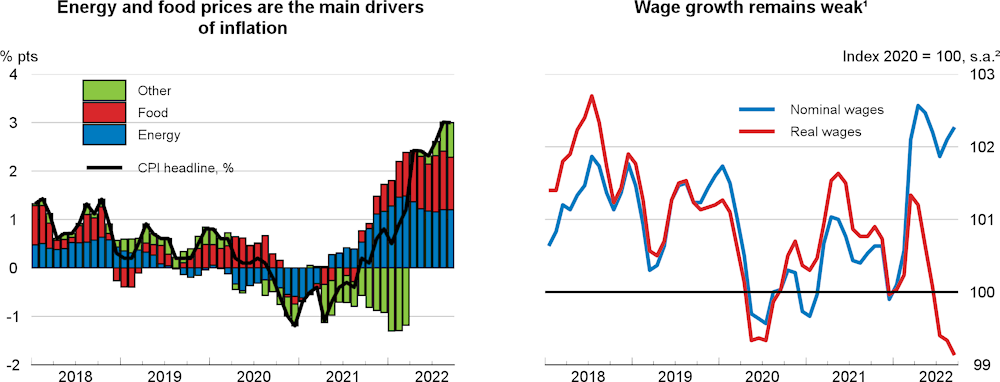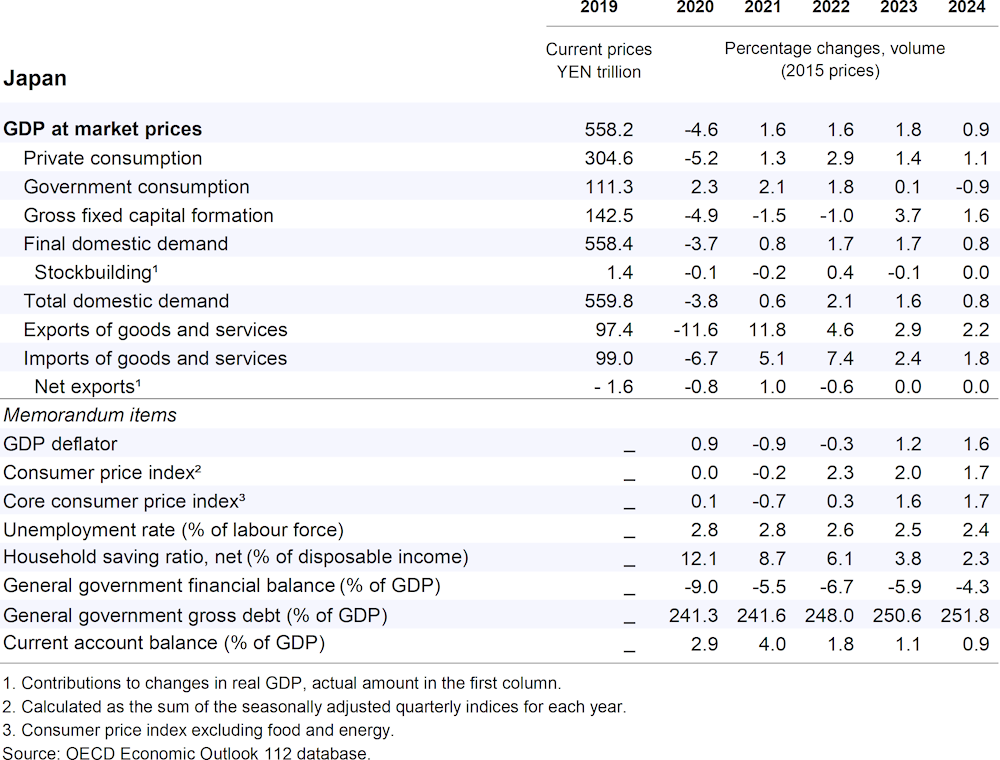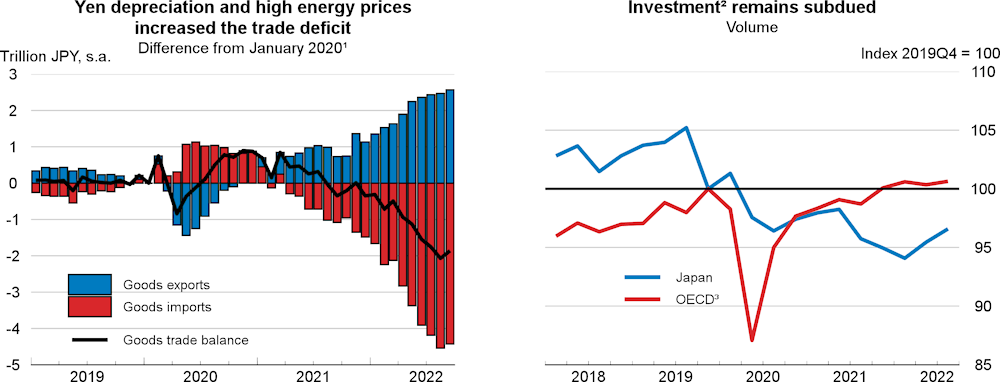Real GDP growth is projected at 1.8% in 2023 and 0.9% in 2024. The new economic policy package will support domestic demand, partly offsetting subdued household confidence and real income. Loss of momentum in trading partner economies will moderate exports. After peaking in the course of 2022, headline consumer price inflation will fall back in late 2023 as energy prices stabilise, but then gradually increase again towards 2% in 2024 as wage growth gains momentum. The labour market will continue to tighten gradually, with the unemployment rate falling to 2.4% in 2024.
The measures to protect the most vulnerable households and firms in the face of higher prices should be temporary and more targeted. Monetary policy will remain accommodative but yield curve control is projected to be eased near the end of the projection period, when inflation reaches its target sustainably, accompanied by stronger wage growth. The latest economic package will also support longer-term growth, with investment in skills, digitalisation and the green transition. Diversifying energy sources, increasing the share of renewables and enhancing the electricity grid would improve energy security.


